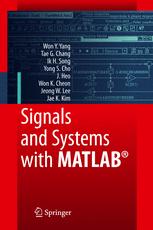

Most ebook files are in PDF format, so you can easily read them using various software such as Foxit Reader or directly on the Google Chrome browser.
Some ebook files are released by publishers in other formats such as .awz, .mobi, .epub, .fb2, etc. You may need to install specific software to read these formats on mobile/PC, such as Calibre.
Please read the tutorial at this link: https://ebookbell.com/faq
We offer FREE conversion to the popular formats you request; however, this may take some time. Therefore, right after payment, please email us, and we will try to provide the service as quickly as possible.
For some exceptional file formats or broken links (if any), please refrain from opening any disputes. Instead, email us first, and we will try to assist within a maximum of 6 hours.
EbookBell Team

5.0
28 reviewsThis book is primarily intended for junior-level students who take the courses on ‘signals and systems’. It may be useful as a reference text for practicing engineers and scientists who want to acquire some of the concepts required for signal proce- ing. The readers are assumed to know the basics about linear algebra, calculus (on complex numbers, differentiation, and integration), differential equations, Laplace R transform, and MATLAB . Some knowledge about circuit systems will be helpful. Knowledge in signals and systems is crucial to students majoring in Electrical Engineering. The main objective of this book is to make the readers prepared for studying advanced subjects on signal processing, communication, and control by covering from the basic concepts of signals and systems to manual-like introduc- R R tions of how to use the MATLAB and Simulink tools for signal analysis and lter design. The features of this book can be summarized as follows: 1. It not only introduces the four Fourier analysis tools, CTFS (continuous-time Fourier series), CTFT (continuous-time Fourier transform), DFT (discrete-time Fourier transform), and DTFS (discrete-time Fourier series), but also illuminates the relationship among them so that the readers can realize why only the DFT of the four tools is used for practical spectral analysis and why/how it differs from the other ones, and further, think about how to reduce the difference to get better information about the spectral characteristics of signals from the DFT analysis.